Intel Owl: Release v3.0.0
13 Sep 2021 Eshaan Bansal intelowl threatintel
Intel Owl is an Open Source Intelligence, or OSINT solution to get threat intelligence data about a specific file or observable from a single API at scale. Intel Owl helps enrich threat intelligence data, especially speeding up retrieval of info because it is composed of 100+ analyzers (tools, external APIs, etc.). Organizations can host their own instance of Intel Owl to help mitigate threats more effectively.
Intel Owl 🤝 Google Summer of Code
Born at the start of 2020 (announcement), Intel Owl has participated in the Google Summer of Code program under The Honeynet Project in both the years 2020 and 2021. Each year a great many features have been developed by the participating students (humblebrag). The following are the summaries of these projects written by the students:
- GSoC 2020 Work Product - Intel Owl by Eshaan Bansal (@eshaan7)
- GSoC 2021 Project Summaries - Intel Owl improvements by Sarthak Khattar (@m0mosenpai) and Connectors and Integrations by Shubham Pandey (@sp35)
It’s our hope that Intel Owl will continue to participate in the Google Summer of Code program, bringing more developers and contributions to the ideas and solutions space in Intel Owl’s ecosystem.
v3.0.0
With the v3.0.0 release, Intel Owl brings many new exciting features and fixes that we have been working on for the last 3 months (involving both GSoC projects).
Following are a brief summaries of the new features and how you can use them to speed up your threat intelligence operations:
Connectors
Designed to support integration with other SIEM/SOAR projects specifically aimed at Threat Sharing Platforms.
Connectors are a new class of plugins in Intel Owl. Connectors run after the completion of a successful analysis which makes them suitable for automated threat-sharing, data aggregation and processing.
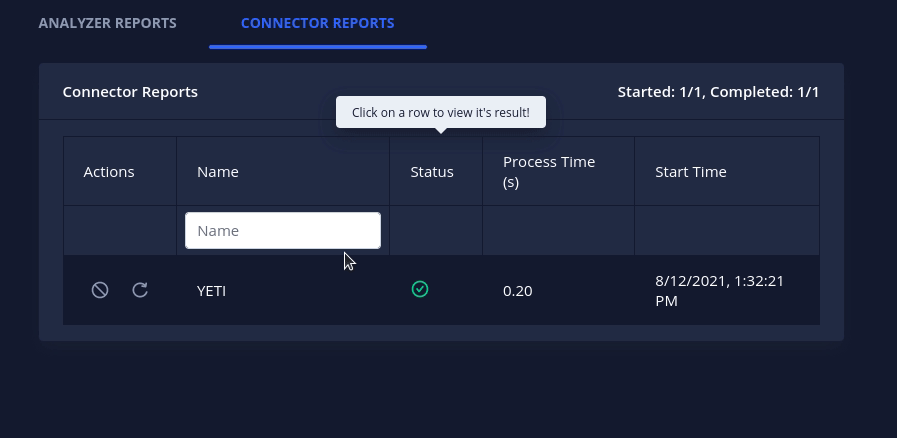
See in demo app
The v3.0.0 release brings 3 initial connectors that you can use today:
MISP: automatically creates an event on your MISP instanceOpenCTI: automatically creates an observable and a linked report on your OpenCTI instanceYETI: Your Everyday Threat Intelligence. Find or create an observable on YETI
We have made writing new connectors very easy (See How to add a new connector ?) so we highly encourage the community to contribute to their development. You can also create requests for new connectors on GitHub.
Learn more on how to enable and customize these connectors in the documentation.
Traffic Light Protocol (TLP) support
Intel Owl now supports the Traffic Light Protocol (TLP) to facilitate sharing of job/analysis results in a standardized manner.

Different TLP indicators
The way Intel Owl facilitates threat information sharing using TLP is that each connector has a maximum TLP value (customizable from the configuration file) associated with it that gives you the control of what information is shared to the external platforms.
Learn more about the definitions of different TLP indicators in the documentation.
Verification of Analyzers and Connectors Configuration files
Intel Owl now verifies whether the configuration JSON files for the plugins (analyzers and connectors) are valid or not checking if the required attributes are correctly set. The application will fail to start if any of the JSON file is invalid.
It also checks for each plugin whether its required secrets are available or not marking them configured or unconfigured automatically. The analyzers or connectors which are disabled or unconfigured will be greyed-out from the selection drop-down on the GUI form and will not be executed even if directly requested via the API. The reason (an helpful error message) as to why a plugin was marked unconfigured can be seen on the drop-down and the configuration tables both, as shown below:
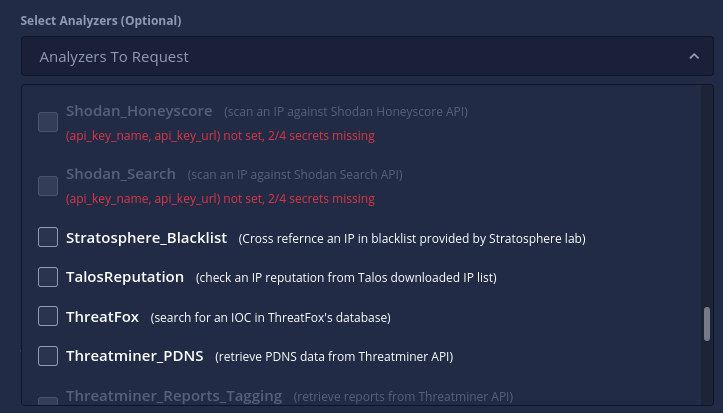
Unconfigured analyzers cannot be selected
On top of this, the configuration files now hold the description and datatype of the secrets and params attributes.
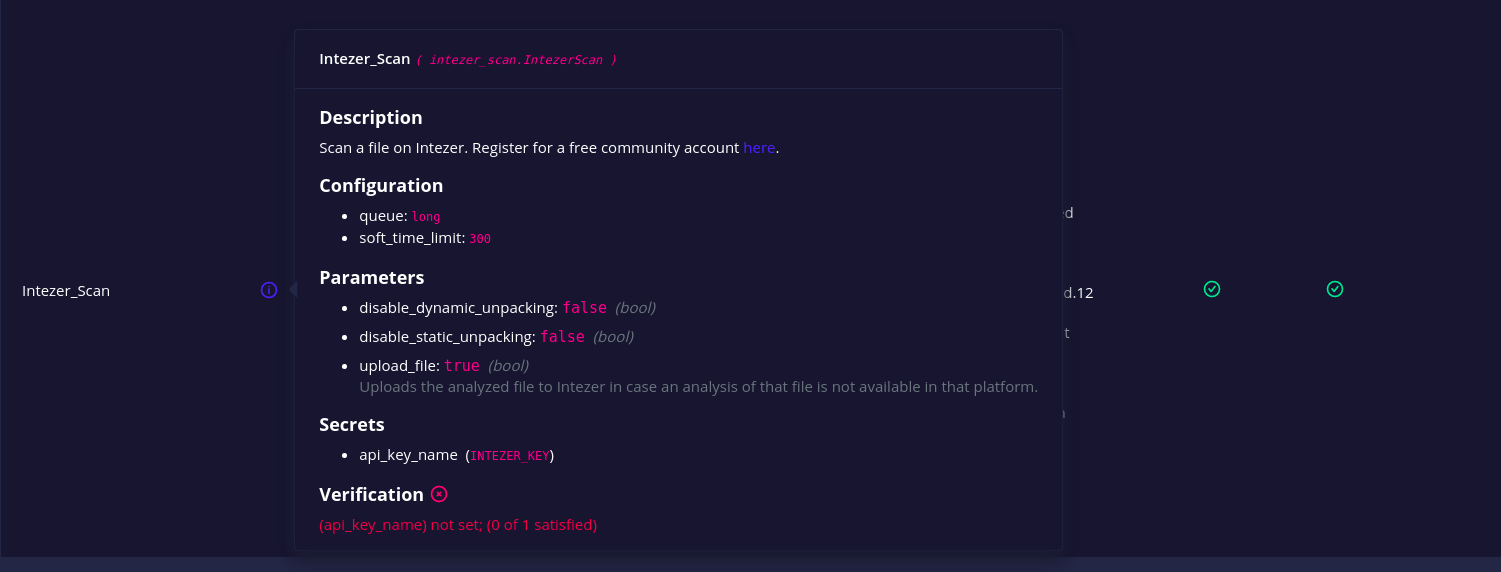
analyzer table showing the parameter’s datatype and description
In this way, the configuration files themselves serve as a self-documentation for the plugins and their parameters. This is especially useful when customizing them either from the JSON file or the GUI.
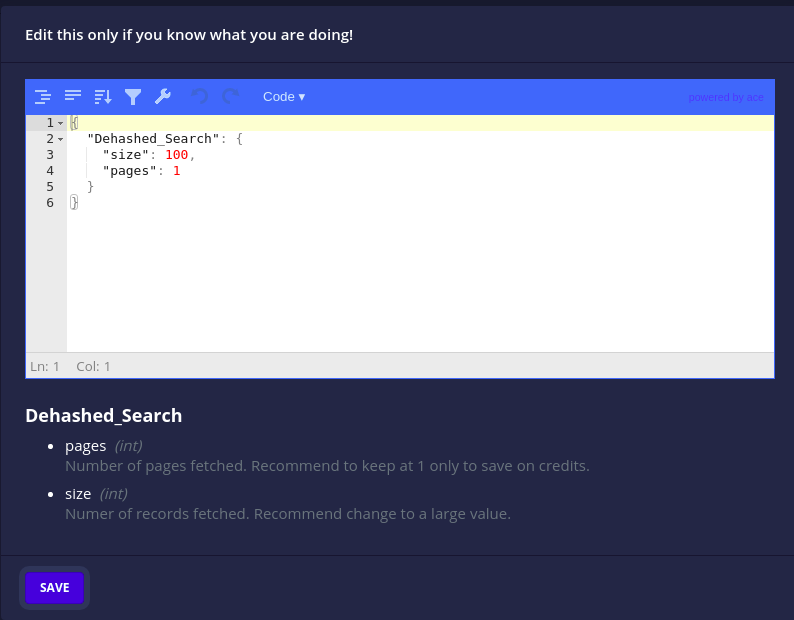
“customize analyzer parameters” dialog box
Analyzers and Connectors Management
Intel Owl v3.0.0 brings granular control over analyzers and connectors.
- A
running/pendinganalyzer or connector can now be cancelled i.e. stop execution and mark it askilled.
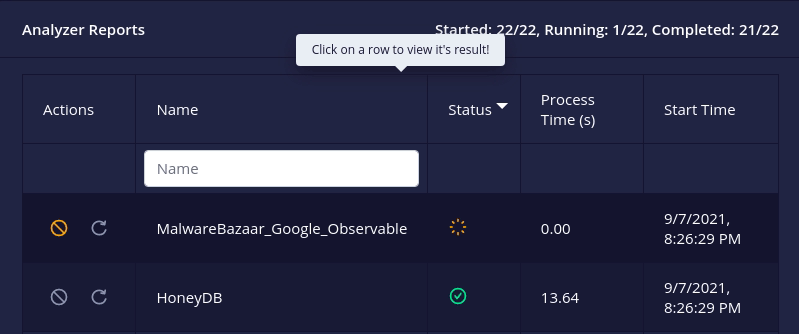
- A
failed/killedanalyzer or connector can now be retried i.e. re-run with its original configuration.
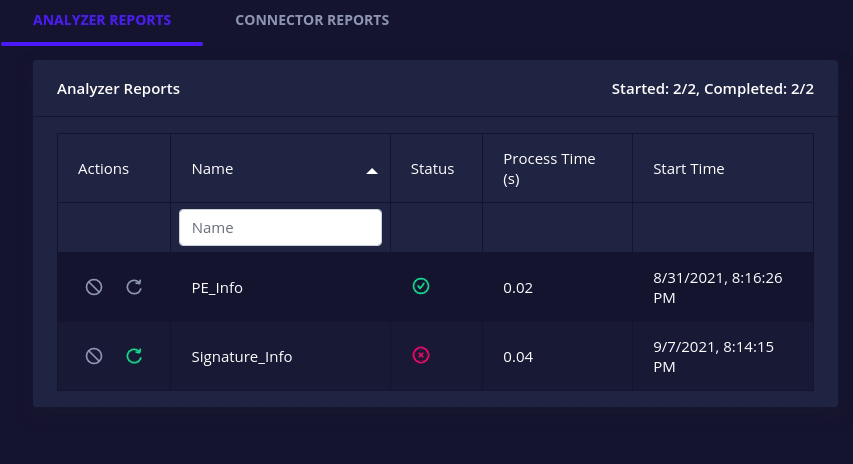
- All docker-based analyzers and connectors have a health check action to check whether their associated instances are up or not.

Click on the health check button to request current status
Learn more on how to make use of these features using pyintelowl or the API directly in the documentation.
New analyzers and upgrades to existing
We have added integration with the following services:
- Spyse API: Search IP/domains/CVEs
- OpenCTI analyzer: Scan an observable on a custom OpenCTI instance
- Intezer analyzers: Scan files or query hashes
- mwdb: Retrieve malware file analysis by hash from repository maintained by CERT Polska MWDB.
- YETI (YETI = Your Everyday Threat Intelligence): Scan an observable on a custom YETI instance.
- hashlookup-server: Check if a MD5 or SHA1 is available in the database of known file hosted by CIRCL
- ClamAV Antivirus Engine: Scan files for viruses/malwares/trojan
Learn more in the v3.0.0 change log.
Update now
You can follow the update guide here and pay attention to the breaking changes as explained in the v3.0.0 change log.
If you are new to Intel Owl, we highly suggest you to try the application! It’s easy and fast, just follow the step-by-step instructions and, in a few minutes, you can get it running on your machine.
End note
We are continuously working on under-the-hood improvements and optimizations and always looking for more contributors and feedback.
Don’t like something ? Need help ? Create an issue on the GitHub page and we will look into it.
Looking to contribute to Open Source ? Here’s the list of beginner-friendly issues and the documentation on how to contribute.
Remember to star the project on GitHub and to follow the official Twitter (@intel_owl) account for updates!